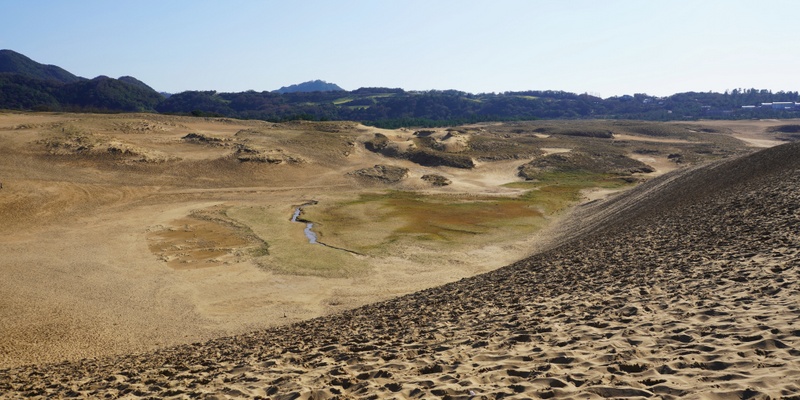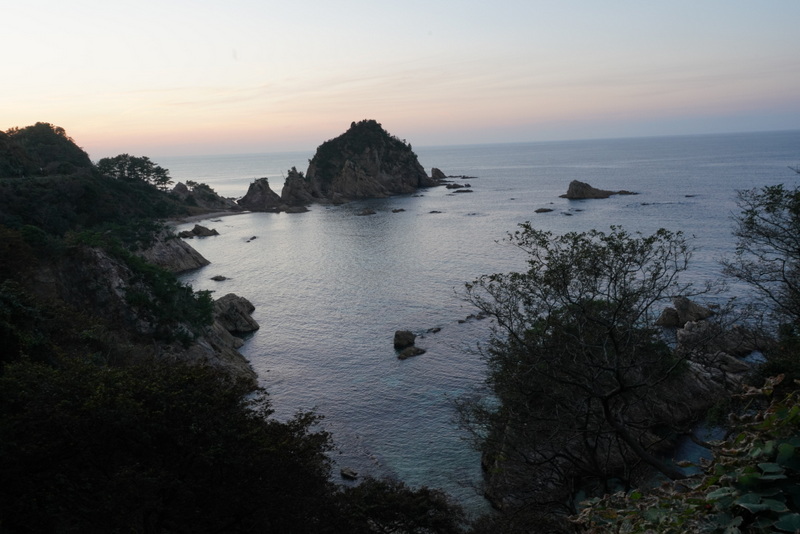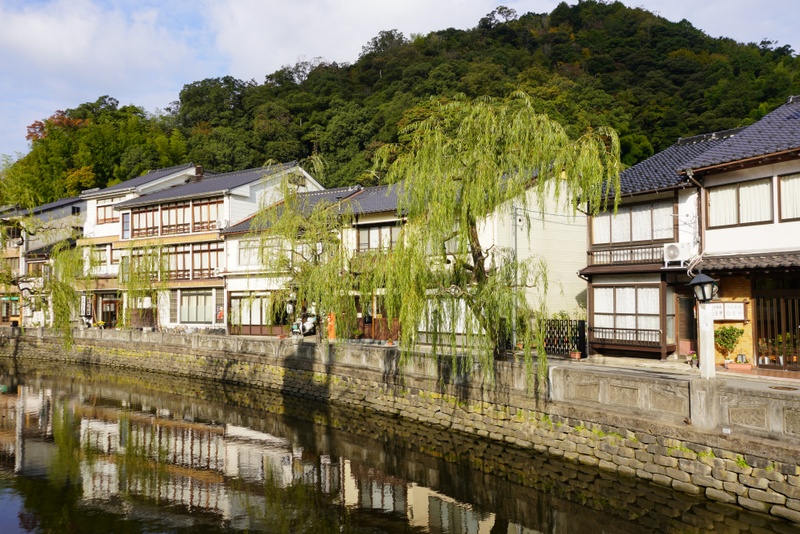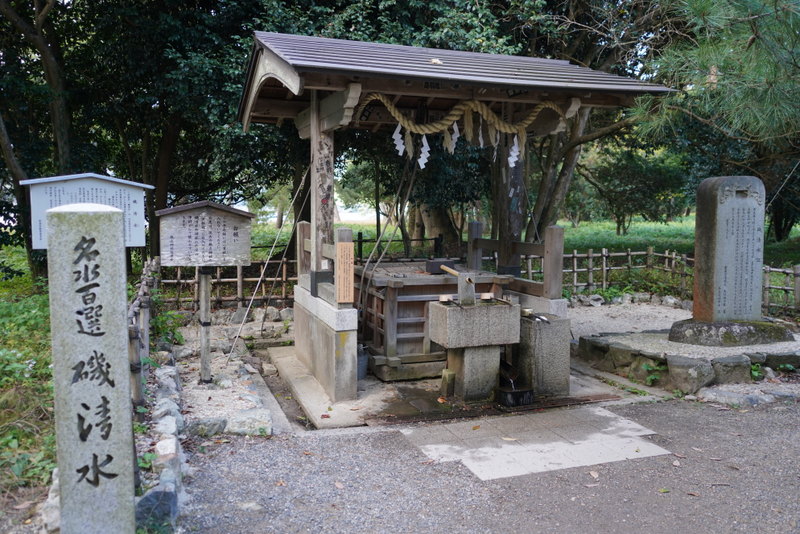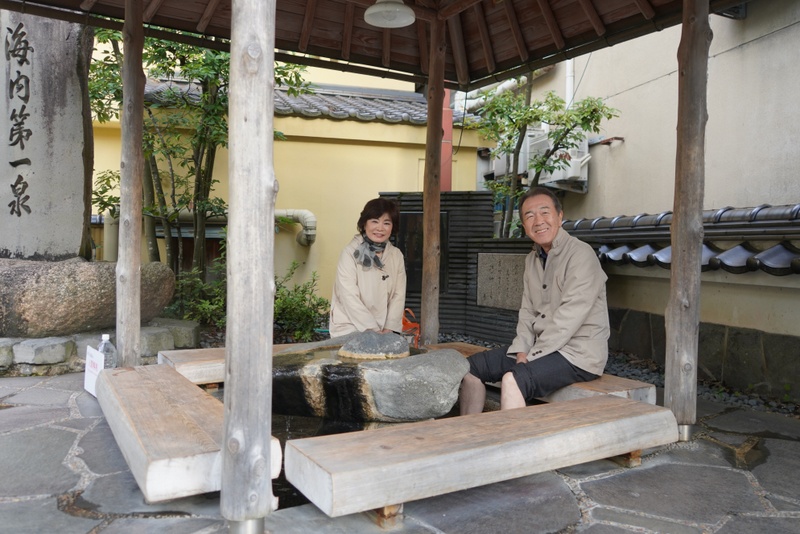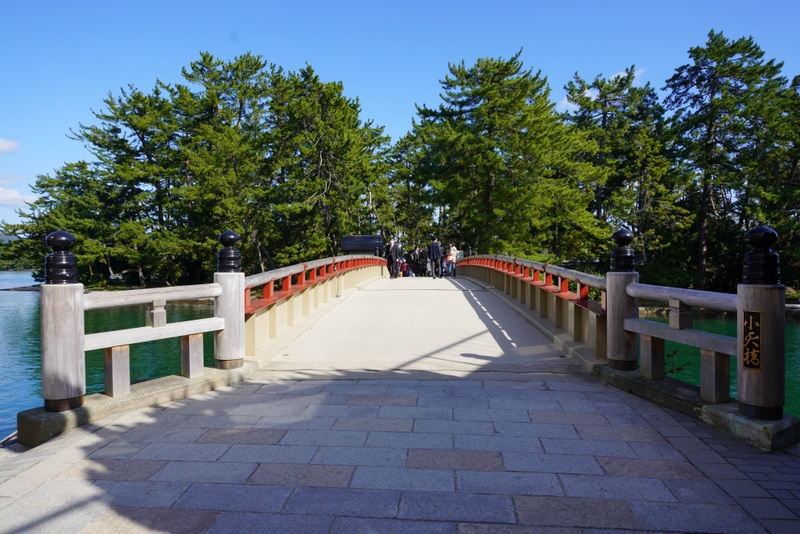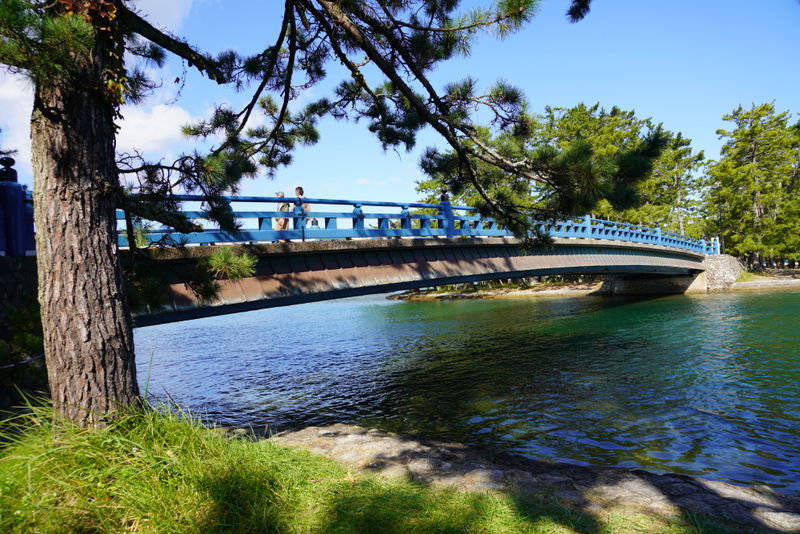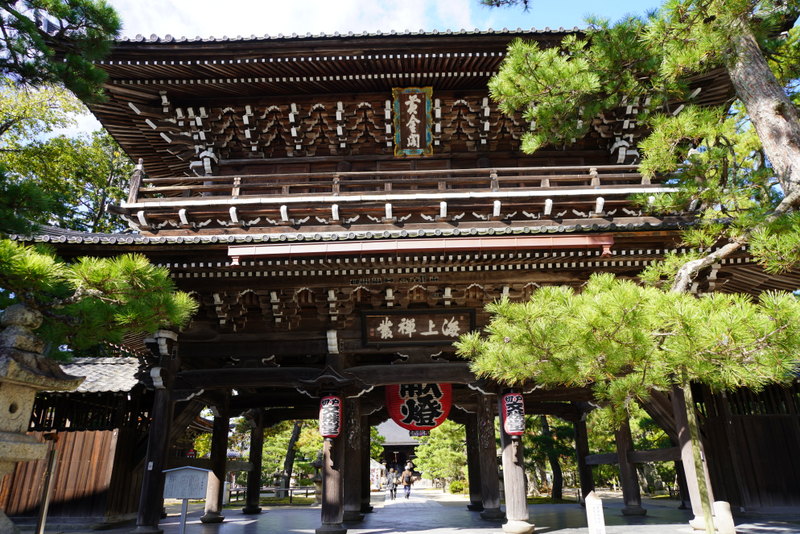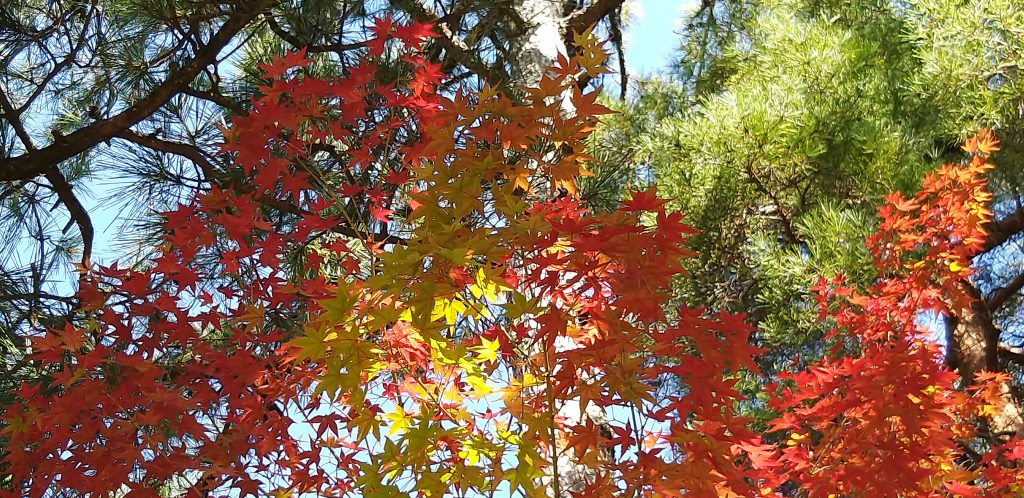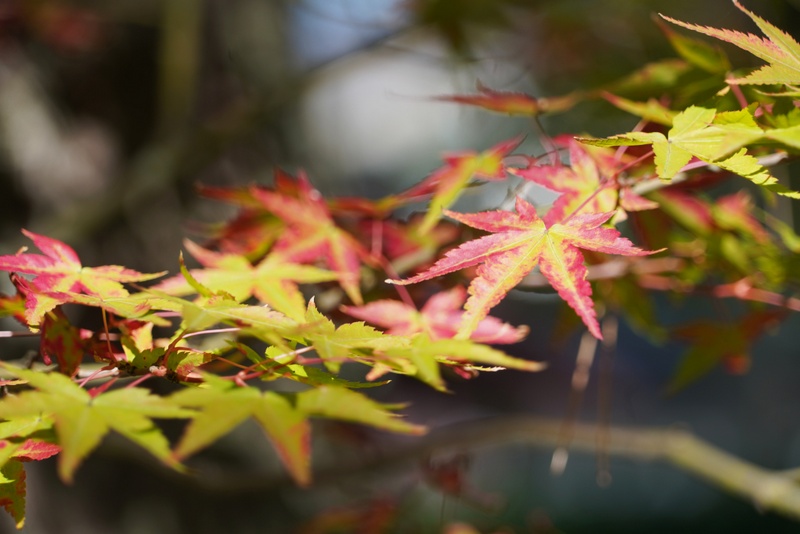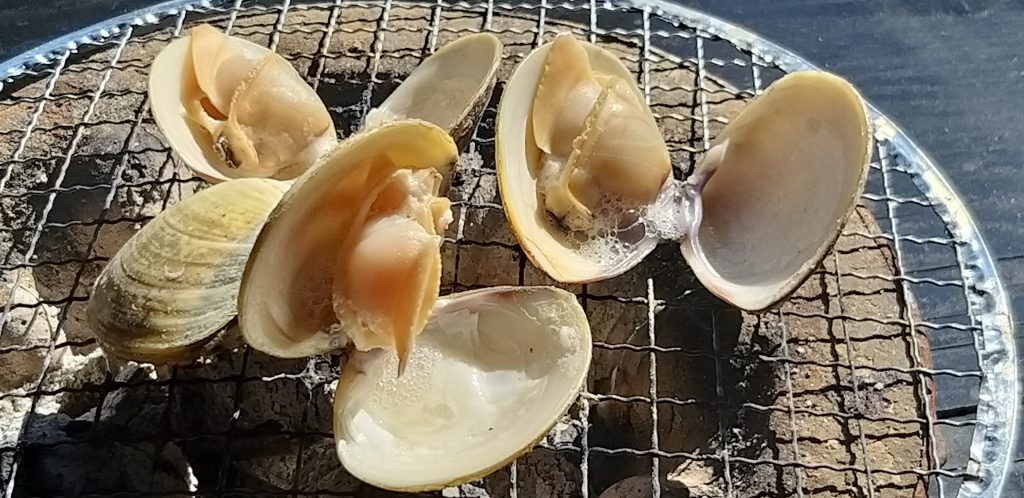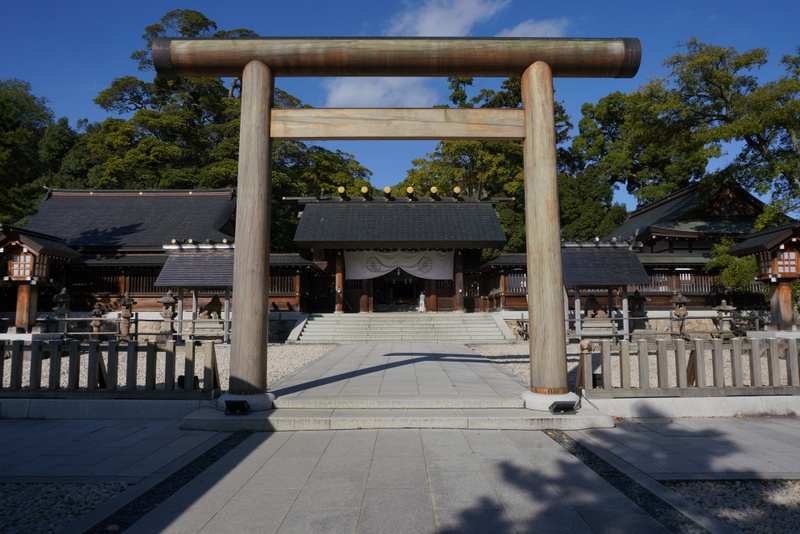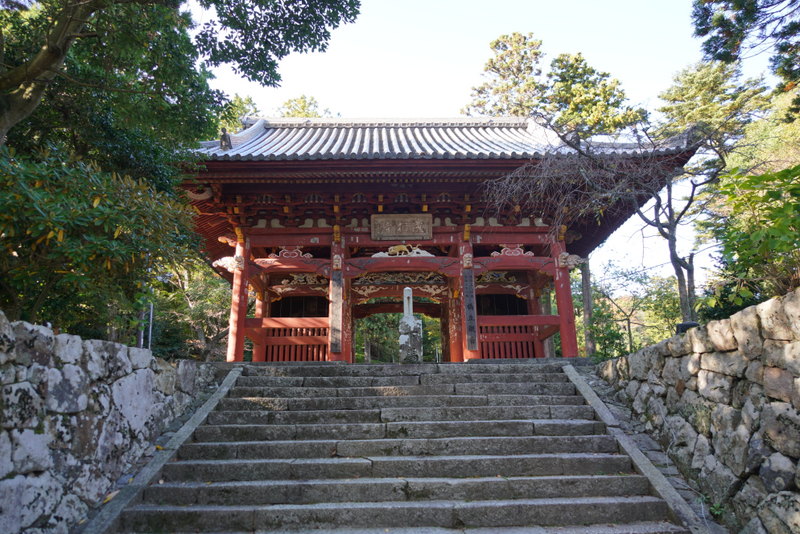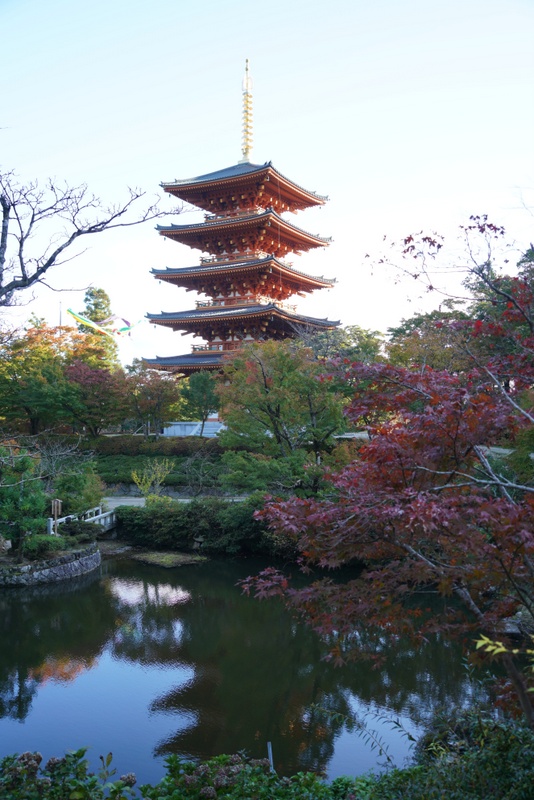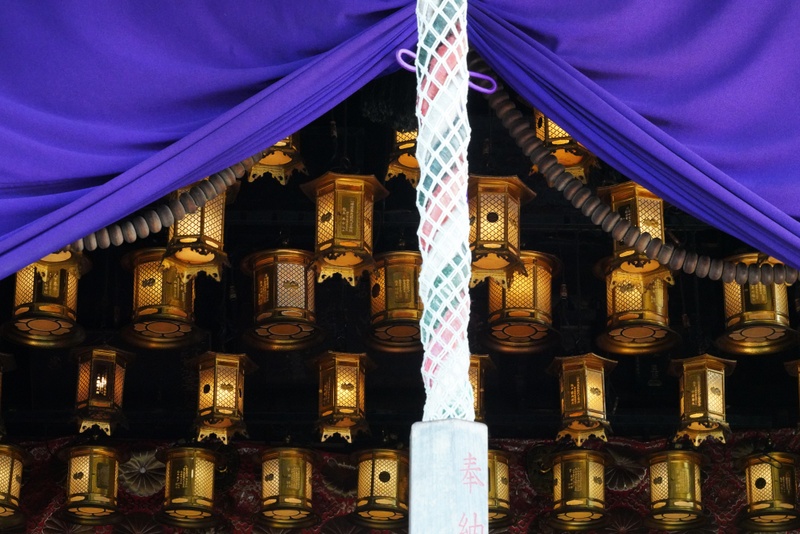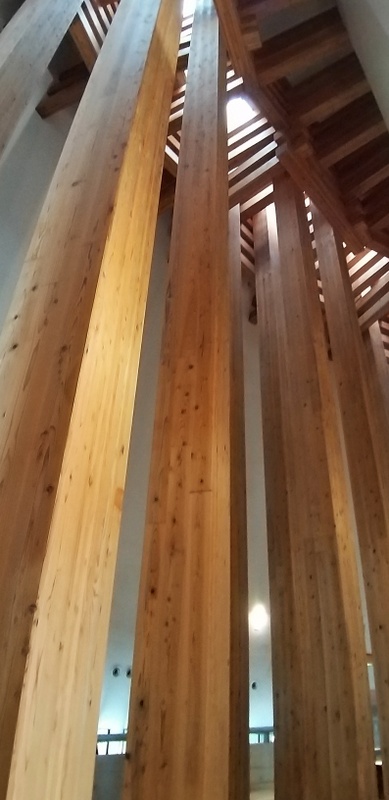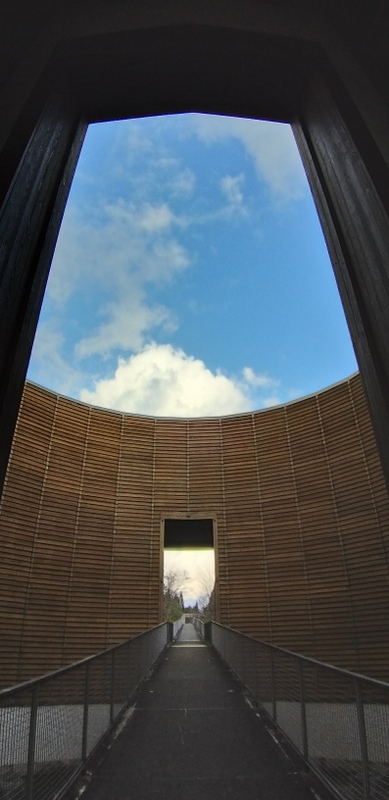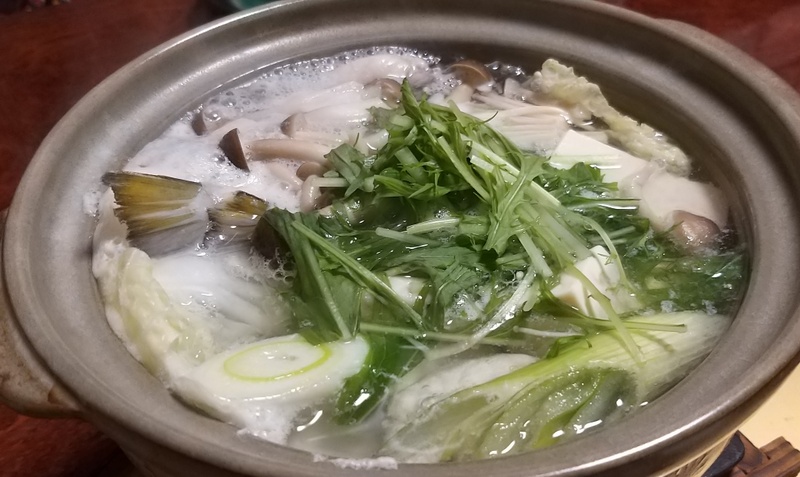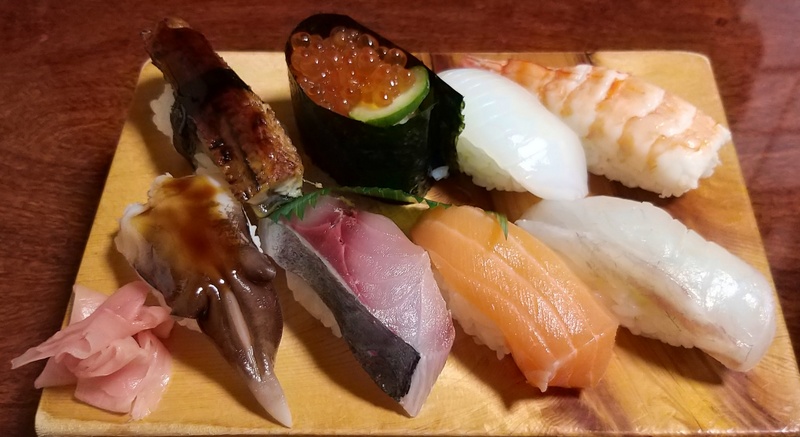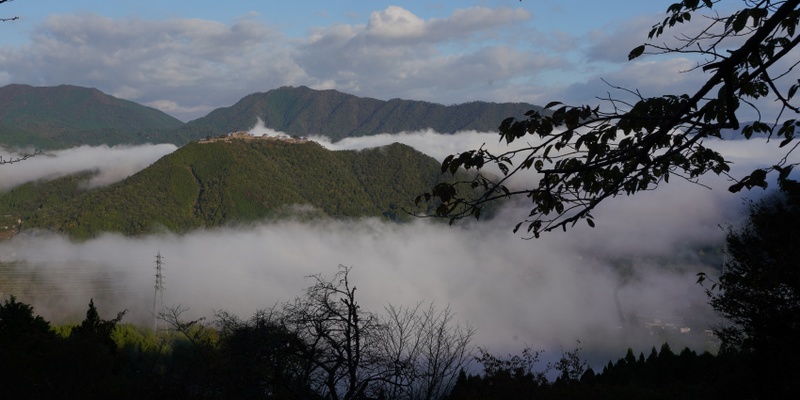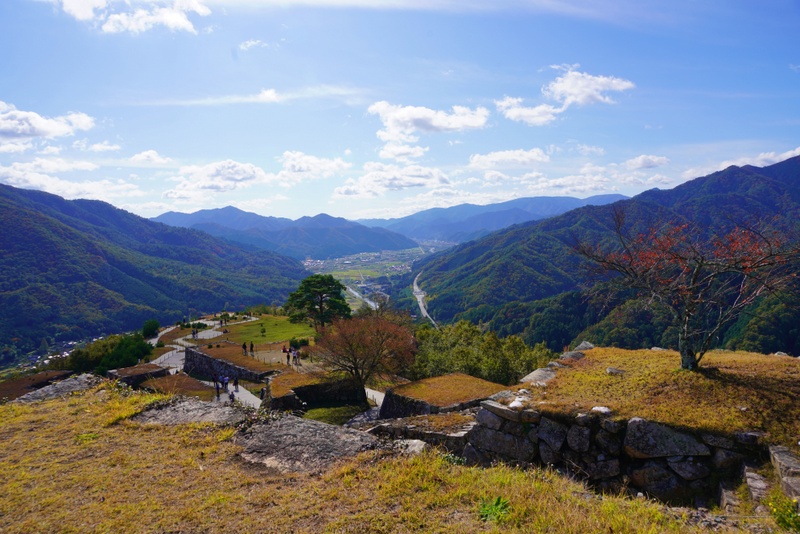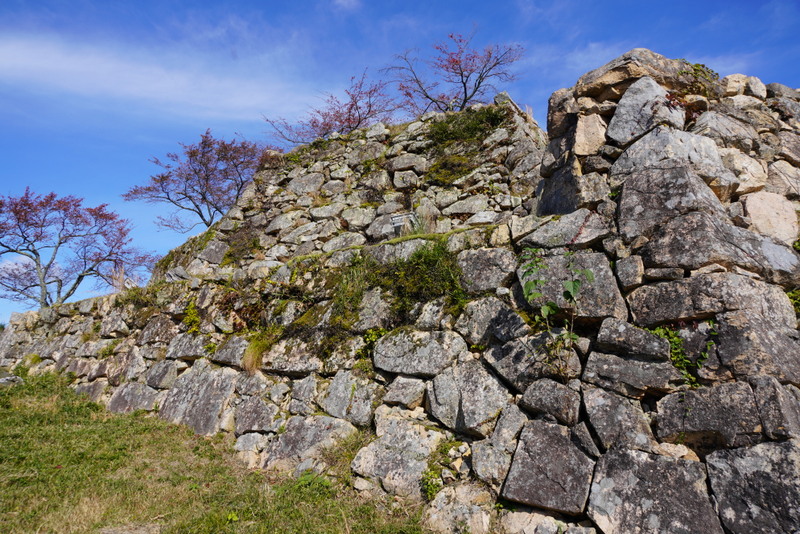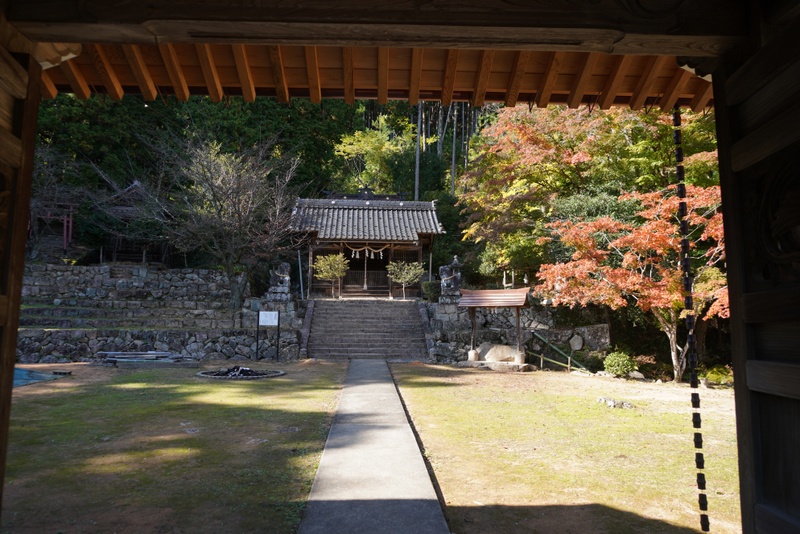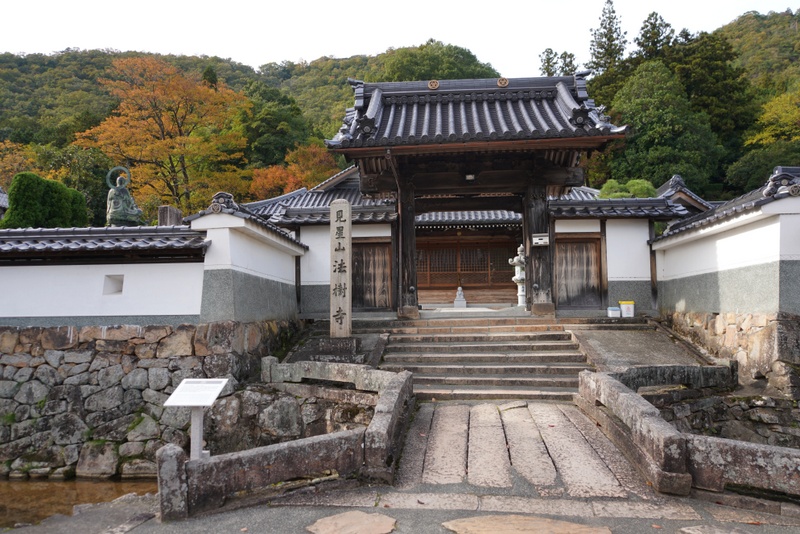November 6 – 10: Journey on a 5-day Kansai Wide Train Pass
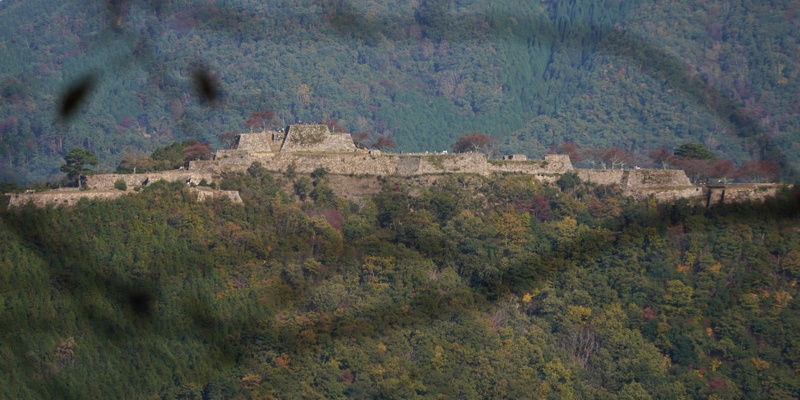
My temple group tour would begin in Osaka on November 11. I therefore bought a 5-day Kansai Wide Train Pass for ¥9,000 and planned to visit Tottori, Kinosaki Onsen, Amanoshade and Takeda Castle Ruins in Tottori, Hyogo and Kyoto Prefecture.
November 6 Wednesday: Tottori
Today, my train departed Takamatsu at 7:48 am. I had to wait half an hour in Okayama for another train and did not arrive in Tottori鳥取till 11 am. I walked to Y Pub & Hostel which is close to the train station and left my suitcase.
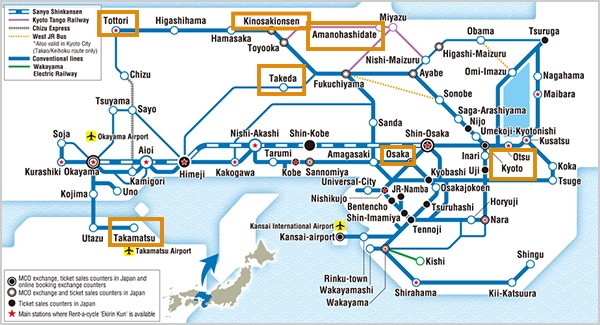
& Takeda with a 5-day train pass
I picked up maps and information from the tourist office on the Sanin Kaigan National Park 山陰海岸国立公園. The park with an area of about 88km2 runs continuously along the Sea of Japan in the Tottori, Hyogo and Kyoto Prefectures. It is known for its numerous inlets, rock formations, islands and caves. The most well-known attractions include the Genbudo Cave, Kasumi Coast, Takeno Coast, Tottori Sand Dunes, Tajima Coast and Uradome Coast.
The tourist office highly had recommended me to take a 40-minute boat trip (¥1,400) to see the Uradome Coast. As the last boat would leave at 3:30pm, the staff suggested me go to the coast before visiting the sand dunes.
I took a bus at 12:05 pm. While on the bus, I changed my mind and got off at the sand dune (¥380 for the ride). But the office had not told me about a ¥600 day-pass which enables visitors to visit all the attractions in Tottori.
The Tottori Sand Dunes 鳥取砂丘 are the largest sand dunes in Japan, spanning roughly 16 km along the Sea of Japan and stretching up to 2 km wide and 50m high. The sand dunes were created over thousands of years, as sand from the nearby Sendaigawa River was washed out to sea and eventually redeposited along the coast by the ocean’s currents. The constant movement of the tides and the coastal winds continuously shape the dunes and provide an ever-changing landscape.
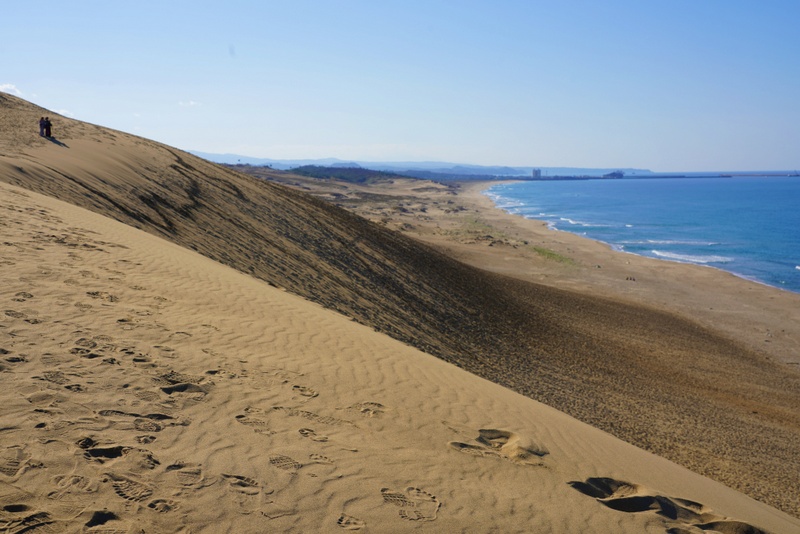
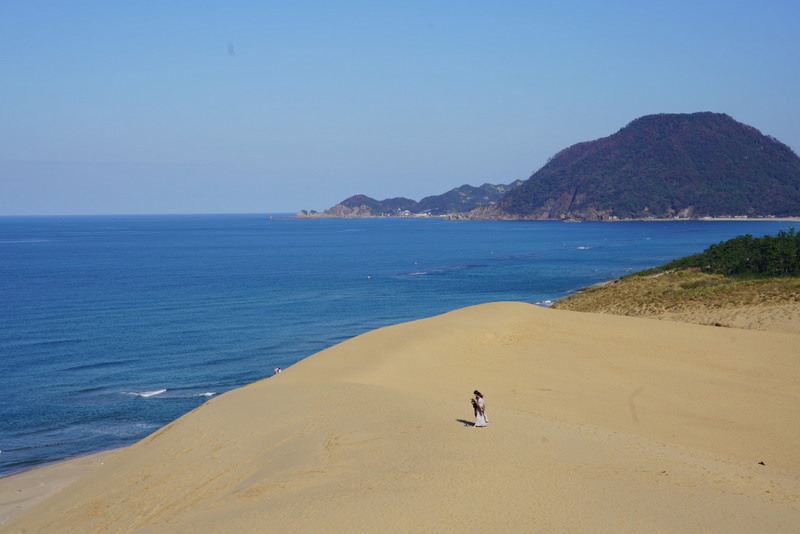
I started at the highest point at the observation deck of the Sakyu Centre which is near the Sand Museum. I did not visit the museum which current theme ending on January 5, 2020, is on South Asia. I also did not take the chair lift which is connected with the sand dunes below. I walked downhill instead.
I spent an hour walking in the sand. I have seen many sand dunes (white, red, black etc) in Africa, Middle East, Asia (mainly in China and Central Asia) and Australia. The Tottori Sand Dunes are not particularly striking by my standard. But as a nature lover, I appreciate and enjoy everything that is nature and natural.
I thought of hiking along the Uradome Coast which has a nature trail. But I gave up the idea when the Tourist Office stressed it was too far to walk. I should have trusted my instinct and simply asked the best way to get to the starting point.
After the sand dunes, I took the 2:40 pm bus back to town (¥380). My curiosity and passion for the coast pushed me to rethink how I could get there with my train pass. The railway information office suggested me take the train to Iwami where I could reach the coast on foot (30 minutes). Bingo!
I ended up taking the 3:19 pm train and got off at Iwami around 3:45 pm. I was reached the coast half an hour later. The coast made up of rocks formed by marine erosion, white sandy beaches and dense scrub pines, stretches for about 16 km on the eastern tip of Tottori Prefecture from Cape Kugami to Mount Shichiyama.
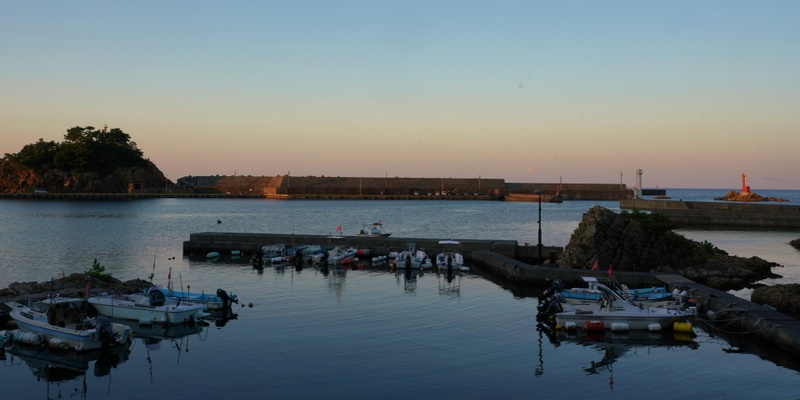
I found the beach deserted. The smell of the sea and expansive view of the Sea of Japan energized me. I knew my choice: I would continue to walk and to watch sunset.
I saw numerous inlets, pine trees and rocky coasts with crystal clear water from the road. The only problem was time: the sun was setting fast. Though I could follow the walking trail by the coast, I knew it would be crazy to walk in the dark. I knew from the map that I could get a bus to Tottori in the fishing village Ajiro.
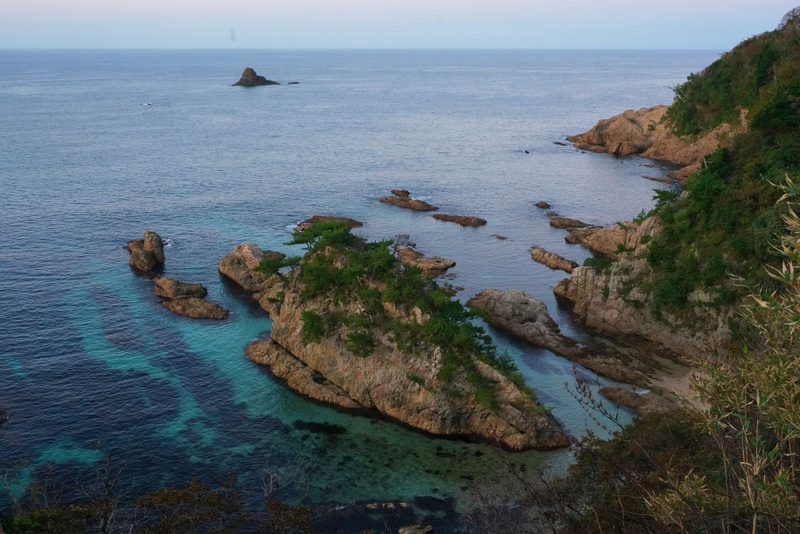
I walked as fast as I could as it was getting dark. I was surprised that I reached Ajiro just after 5:30pm. I asked the first person I met where I could find a bus to Tottori. A lady took me to a bus top only to find out that the bus left five minutes ago. The next one would arrive an hour later.
I was frustrated. Then I spotted a bus coming. It was going to Iwami Train Station! Bingo! I was extremely lucky! As a result, I was back on the train heading back to Tottori before 6:30pm.
I was amazed I had the energy to do so much today. I had not eaten as I was too busy. I found an Indian restaurant near the hostel. I love curry. But the chicken curry and nan are not authentic. The nan tasted more than sweet bread and the curry is not spicy and hot enough for me.
November 7 Thursday: Kinosaki Onsen
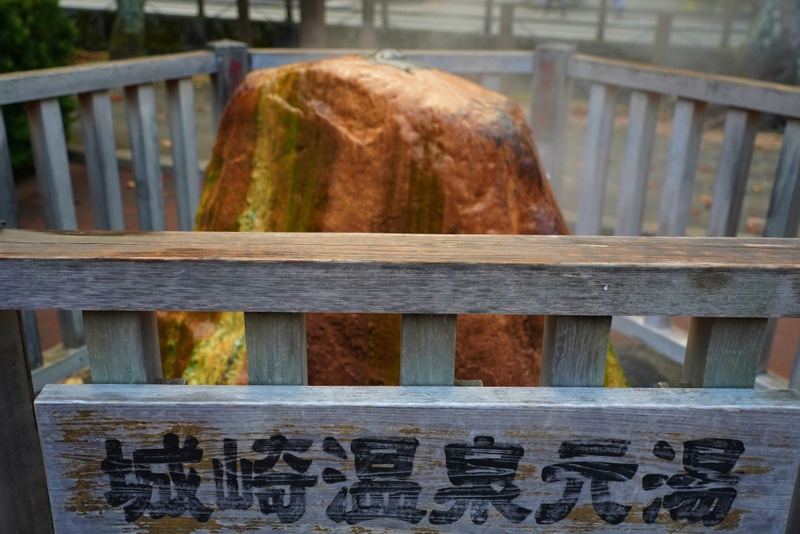
My second destination was Kinosaki Onsen 城崎温泉which is said to be one of the top onsen destinations of the Kansai Region. Hot springs were discovered here around the 8th century and since then the town has developed into a charming old-fashioned onsen town with many traditional ryokans. In the evening, guests stroll about the town in yukata and geta (wooden clogs) visiting the seven public baths.
I took the train leaving Tottori after 9:30pm and arrived at my destination two hours later. I like the town as soon as I stepped out of the train station. Built along the Otani River that flows into Maruyama River which flows into the Sea of Japan, this small town is picturesque with a very Japanese atmosphere: willows, wooden houses, stone wall architecture and onsen. In spring time, it would be even more enchanting with cherry blossoms.
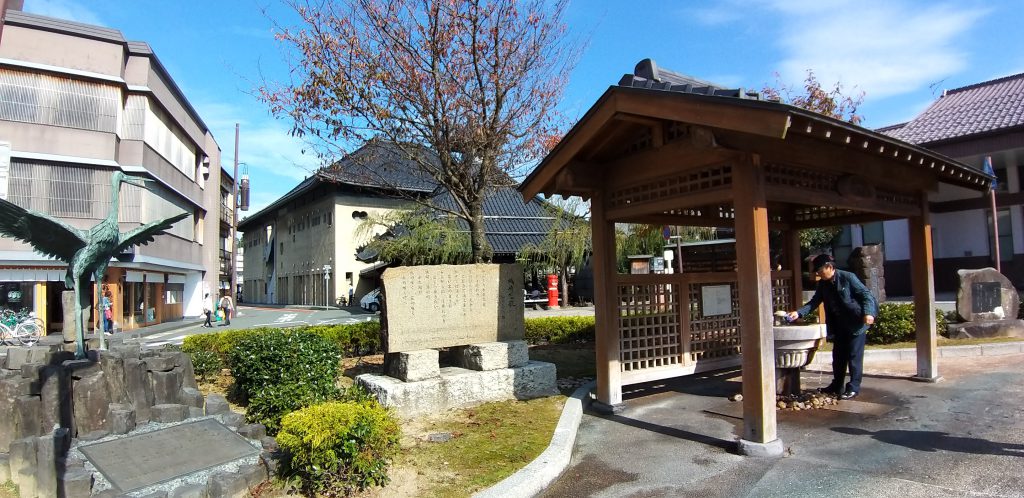
Kinosaki has a few attractions including the Genbudon Cave on the other side of Maruyama River, Onsenji Temple, an Art Museum, a ropeway and its seven public baths. Visitors can get a day pass for ¥1,300 to visit all the baths. Two of the seven baths were closed today.
I had an onsen day by default. My original was to visit the Genbudon Cave and the temple before spending the late afternoon and evening in the onsen.
I took the 12:37 pm train to the Genbudon Cave which basalt pillar joints were formed by volcanic activities some 1.6 million years ago. This place is well-known as the first discovery in the world where the magnetic force is reversed. Alas, I did not find a boat to cross the river nor a bus running between the train station and the cave. I could do nothing but take the next train back to Kinosaki at 1:11 pm.
I went to the tourist office and accidentally found a ¥500-yen bus tour to the Museum of Wood Culture by Tadao Ando which runs on weekends till November 10. I read about this museum and had been trying to find a way to visit it. Bingo!
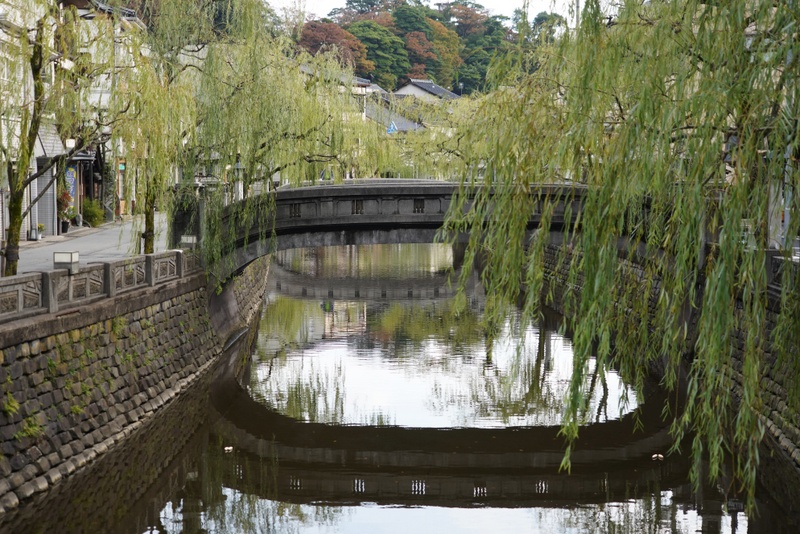
The office also suggested a visit to the Onsenji Temple. According to legend, Dochi-shonin, a Buddhist monk underwent further training for 1000 days here. Upon completion of his training, hot springs emerged from the ground. The monk built a temple to enshrine the statue of ‘Juichimen-kannon’. This 2m-high statue of 11 faces Goddess of Mercy, Kannon that has protected Kinosaki for 1300 years, would be displayed (this happens once every 33 years).
As the Satonoyu Onsen the biggest of the seven public baths is situated next to the tourist office, I decided to get a day pass and began my onsen tour. There are two outdoor pools in addition to a couple indoor ones. I found the water of the indoor pools too hot. The temperature of the outdoor pools was perfect.
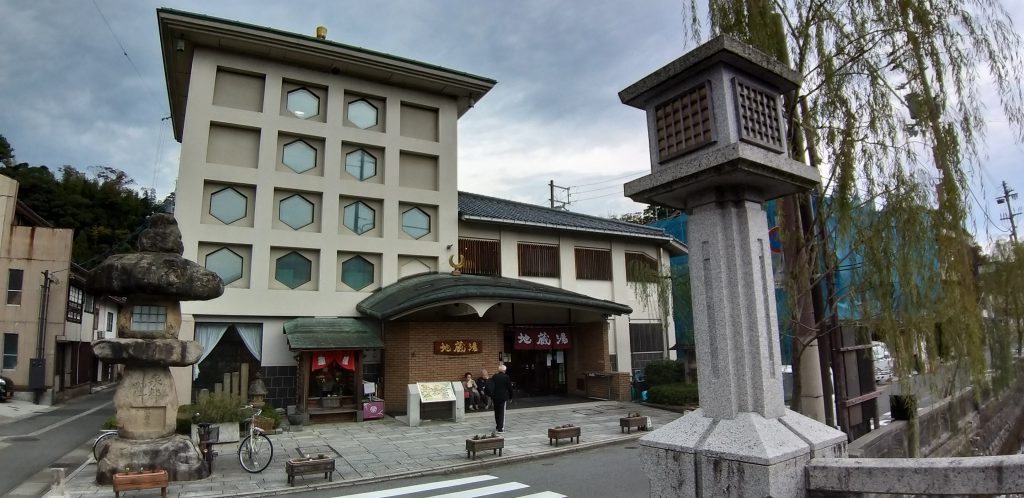
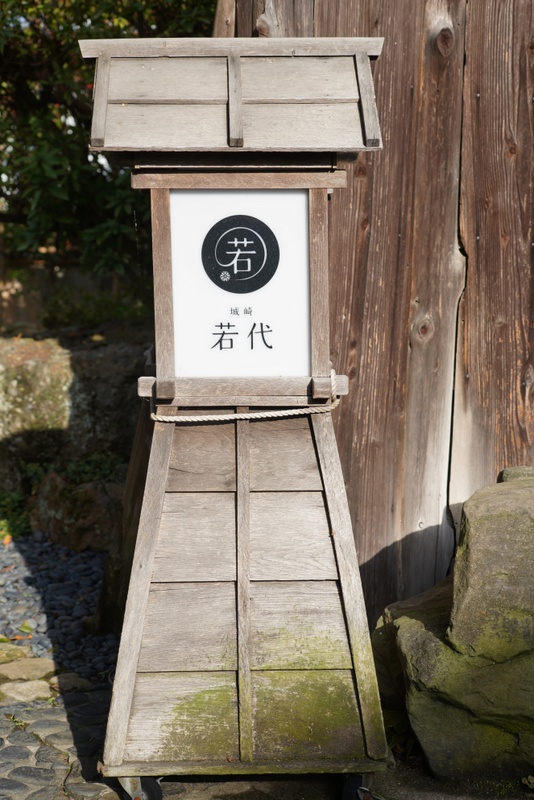
I had booked an all lady guesthouse Kinosaki Wakayo tonight. I was able to check in after spending an hour in the Satonoyu Onsen. The guesthouse run by a young lady who has inherited the house from her family, is clean, cosy and comfortable.
Then I picked up my walking poles and planned to walk to the Onsenji Temple and the top of Mt. Daishi (231m) with a viewing platform.
But it started to rain. I ended up going to the Mandarayu Onsen, which is not big. It has one big indoor pool and two outdoor tubs each is only big enough for one person. I got in and the water was not too hot. It was a nice experience.
Nearby is the Yakushi hot spring source located in front of the Yakushidou Temple. I had a quick look at the temple before it closed at 5 pm sharp.
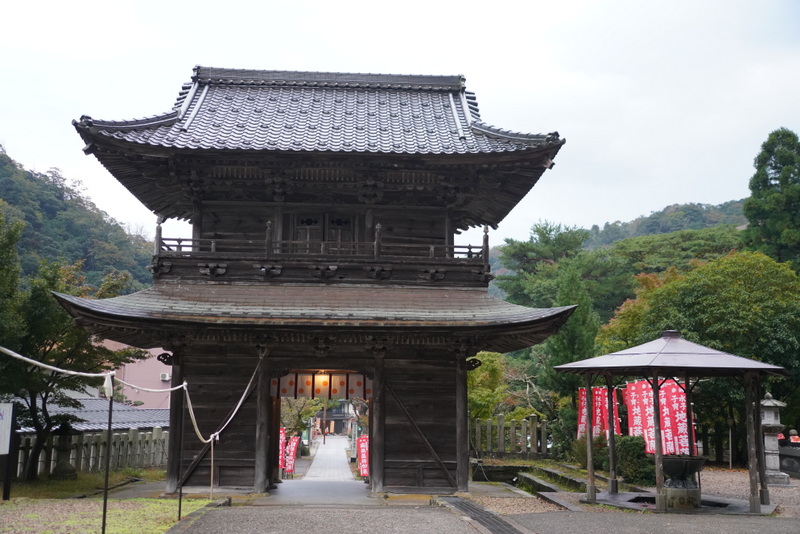
Opposite the temple is the Kounoyu Onsen which is my favourite. It has a nice outdoor pool in a Japanese garden. With fresh cold air, I did not find the water too hot: I must have spent over 15 minutes in the water.
It was after 5:30pm when I came out. I went to Kaichuuen a seafood restaurant recommended by the guesthouse. The area is known for the Matsuba crab i.e. the crab picked from the Sea of Japan in winter. The crab season began on November 6.
I ordered a crab and egg rice bow for ¥1,670. I found a few pieces of Matsuba crab in my rice bowl. The crab meat was tasty and delicious. But on reflection, I should have ordered crab with shrimp sashimi rice bowl or an expensive crab set!
I was back on the street around 6:30 pm. The street was dead quiet: all shops and most of the restaurants were closed. The only thing to do was to visit another bath. Hence, I went to the Jizouyu Bath which has only one indoor pool. The water was so hot that I did not dare to get in especially after dinner. I only had my legs in the pool. After ten minutes, I got up and left.
I have high blood pressure and should not over-indulged myself in onsen. Though the Ichinoyu Bath near the guesthouse was open, I decided to give it a miss.
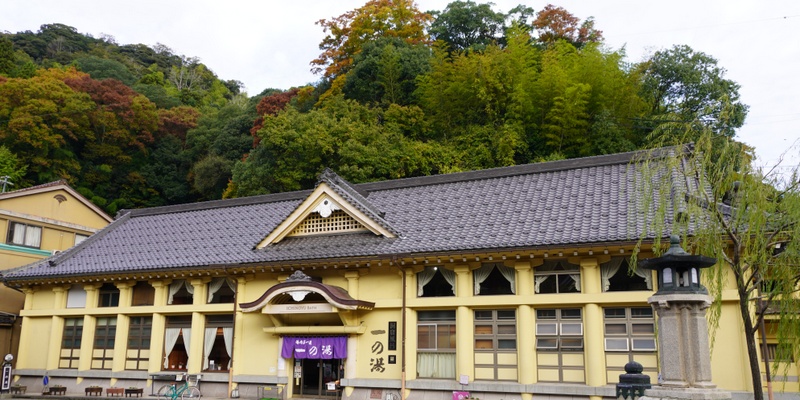
I returned to the guesthouse and met Robbie, a young lady from New York who would start her first job next January. With her help, I learnt how to use the new editing version of the Word Press to upload text to my website. She also taught me how to upload photos. Bravo!
November 8 Friday: Amanohashidate
My third destination was Amanohashidate 天橋立. I took the 9:33 am train and had a nice ride on a local train through the rural areas. I stayed in a simple ‘no-frill’ inn called Auberge Amanohashidate for ¥6,050 which I gather is part of the onsen hotel next door. We had free access to the onsen. I also ordered a deluxe dinner for ¥3,000.
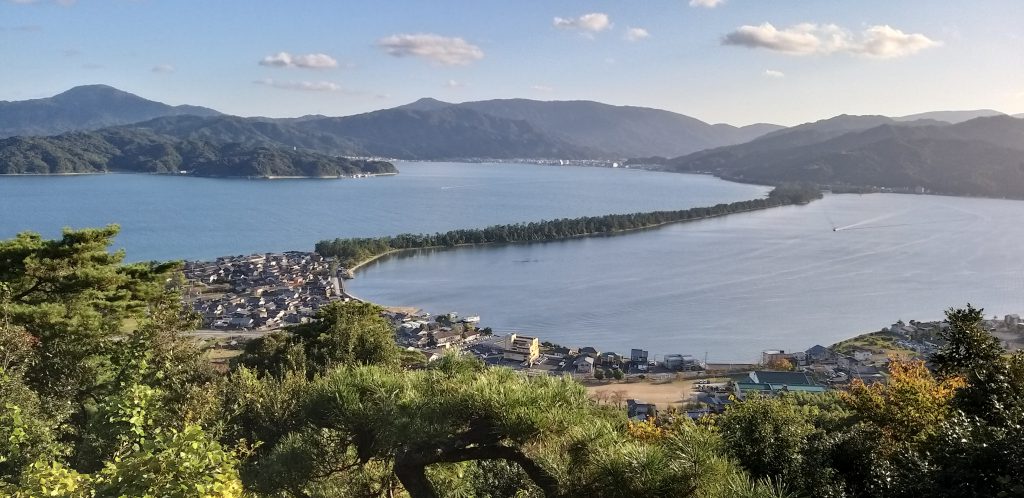
Amanohashidate is a pine-covered sandbar that spans the mouth of Miyazu Bay in the scenic, coastal region of northern Kyoto Prefecture. According to legend, Amanohashidate used to be a ladder for the god Izanagino Omikami to come down from heaven to visit the goddess Izanamino Omikami at Manai Shrine. However, the bridge fell down to earth and became Amanohashidate that is seen today. It is one of the three most scenic spots in Japan.
The sandbar measures 3.6 km long and 20m/170m wide with about 8,000 pine trees thriving on it. Viewed from the mountains at either end of the bay, the sandbar looks like a pathway between heaven and earth.
After leaving my suitcase in the inn, I began exploring the town on foot. I first visited the Chionji Temple, one of the three temples in Japan dedicated to the Bodhisattva Monju. The temple gate is exquisite and well-preserved. Here some maple leaves have changed colours!
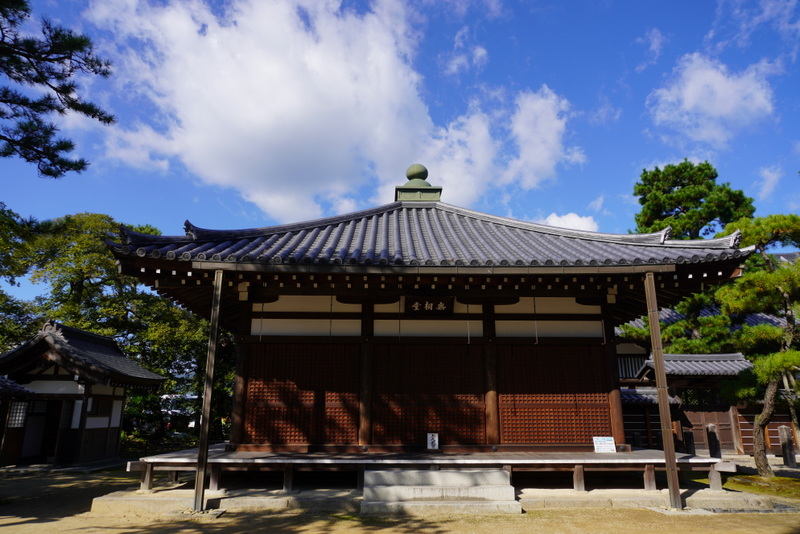
I strolled leisurely across the sandbar. I had to first cross Kaisenkyou “the rotating Bridge” and then another bridge called Daitenkyo.
It is interesting to see some of the pine trees have unique names derived from the land and the various shapes of the trees.
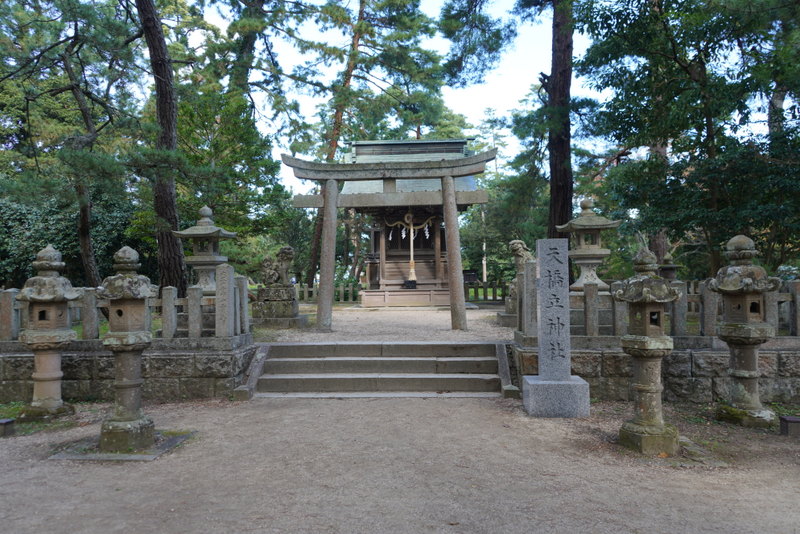
I stopped in one of the eateries and had four fresh clams for ¥480. I cooked them on charcoal myself: they were most delicious! At the end of the sandbar stands the Motoise Kono Shrine.
Many ‘sightseeing’ visitors would go to the Kasamatsu Park for the“Syouryukan” view. They find the sandbar resembling a dragon flying into the heaven. Many would take a ferry across the bay and then a cable car to the top of the park for photos. Well, I prefer to take the 30-minute walk to the park. I was alone!
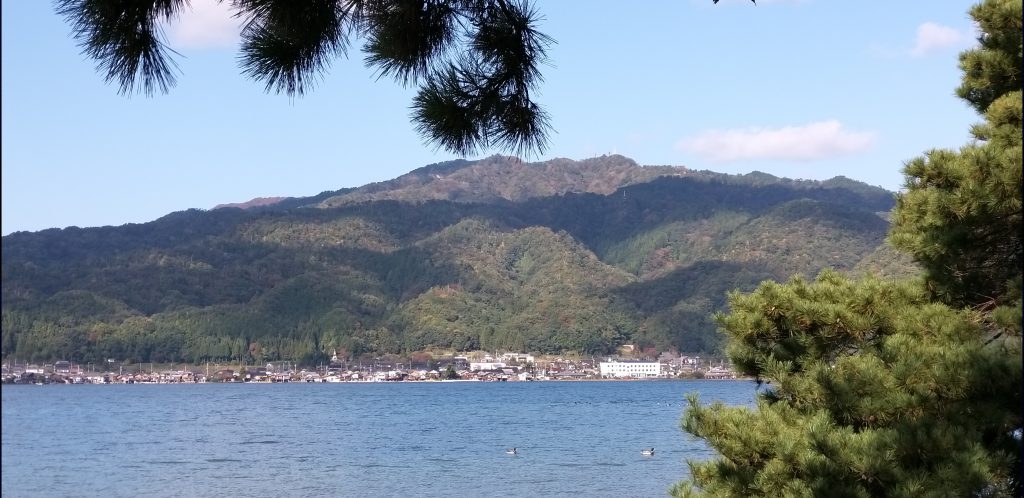
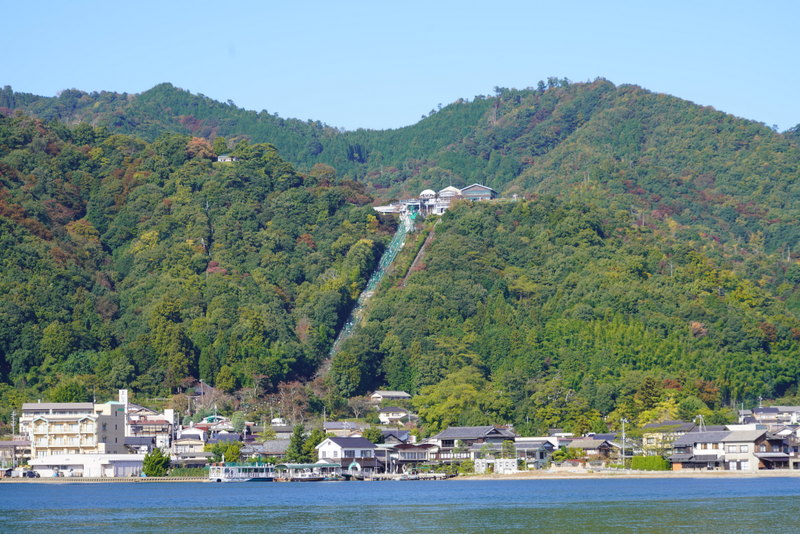
I had not thought of going to the Nariaiji Temple 成相寺of the Shingon Sect (the No 28 sacred temples out of 33 sacred temples in Western Japan). When I noticed that the temple is only about 1.1 km from the park, I decided to take a look at this temple built in 704 which is believed to have the power to make visitor’s wish come true. It is not an easy uphill walk which took about 25 minutes.
The temple originally located near the top of Mount Tsuzumigatake, was moved to its current location further down the mountain after a landslide about 250 years ago. The temple’s main object of worship is a carved wooden statue of Kannon that dates from the Heinan Period.
The temple ground is leafy and tranquil. The bell tower houses the “bell of neutrality” which is completely enclosed and has never been struck due to a sad legend about its origin. It is said that a baby was accidently dropped into the molten metal to be cast into the bell.
The five-story pagoda (rebuilt in 1990s) by the pond is picturesque. I walked up to a hill top with an observatory platform and had fantastic views over the bay from.
I took the same path back to the main road. My bus arrived shortly after 4 pm (¥400) and it was a long ride along the coast.
Before dinner, I went to the onsen which has a lovely outdoor pool with views over the bay. I had an enjoyable dinner at 6:30pm.
November 9 Saturday: Tajima Highland on a Bus Tour
I had a wonderful day travelling on a Tajimawaru Uwano Kougen one-day pass (¥500). I took the 7:48 am train and wait for half an hour outside the Toyooka Station for the bus to arrive from Kinosaki. The bus had about a dozen passengers. I was surprised to find another tourist from Hong Kong on the bus.
At 11:10 am, we arrived at the first stop – Saruodaki Waterfalls The 60m-high falls comprise an upper and lower sections. We stayed for half an hour.
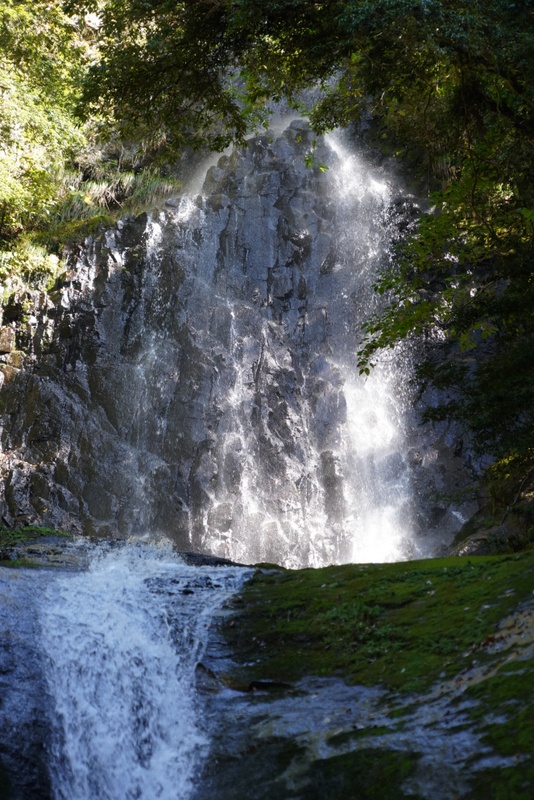
The second stop was the Tajima Highland Botanical Gardens where we spent two hours. I paid ¥500 to enter for the garden which is fairly small and does not have much to offer at this time of the year.
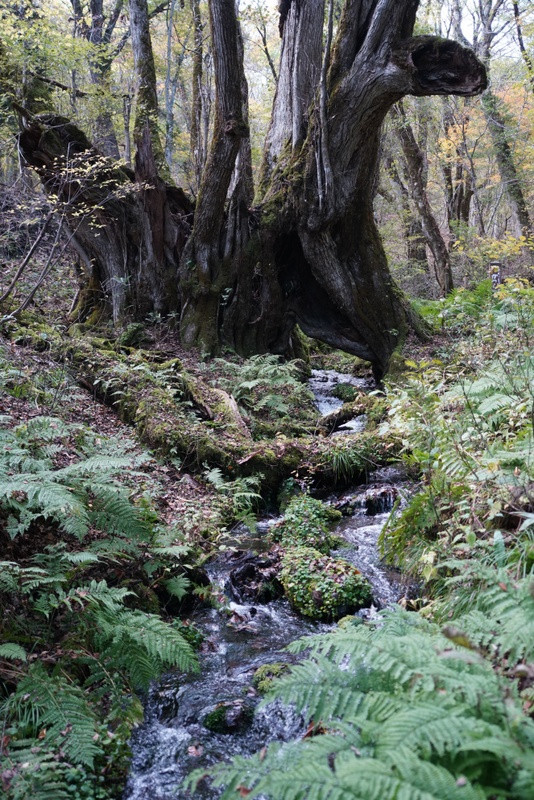
1200-year-old tree
As I still had over an hour, I went to the restaurant and ordered a beef lunch set for ¥1,080. The area is famous for its beef. But I am not impressed by the beef I had.
Our third stop was the highlight of the tour – the Museum of Wood Culture (1994) designed by Tadao Ando. I find the oval-shaped wood building with a diameter of 46m resembling an imposing cathedral.
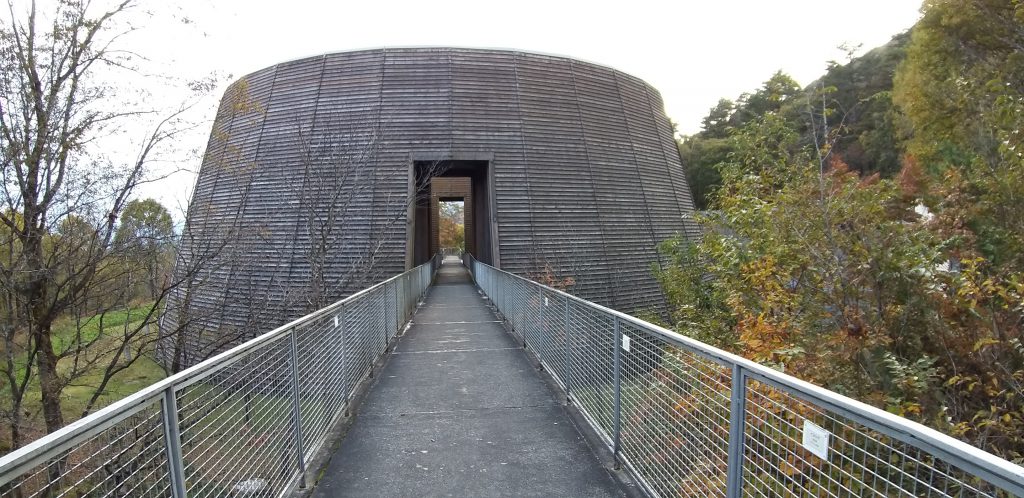
The museum focuses on the role of wood and forests in Japan and shows some wooden houses built in Germany, China etc. It is impressive with tall pillars soaring straight up into the sky expressing the living vitality of a growing forest.

There is a lot to see both inside and outside the museum which feels like a sanctuary. I wish I could have spent two hours here instead of the Botanical Garden.
We had half an hour at the Muraoka Farm Garden Roadside Station which sells local agricultural produce including beef, vegetables, rice, fruits etc. It is said that Tajima beef is the original Kobe beef.
Tonight, I would stay in Guesthouse Tenku in Takeda. I was advised to get off at Ebara Station where I could catch a train to Takeda. As soon as I got into the train station, I jumped onto a train around 4:20pm. I was happy and thought I might arrive at the inn before sunset.
But I forgot to get off and change train in Wadayama. By the time I realised the mistake and got off at the next stop, I had to wait for over an hour for the next train to take me back to Wadayama. Luckily, I had my computer and was able to write my travel notes in the waiting room!
The 6:18 pm train arrived on time. As soon as I got off the train, I found the training heading to Takeda waiting on the opposite platform. The train left at 6:25 pm. Fantastic!
On the train, I met a young guy from Hong Kong who had also booked to stay at the same guesthouse. He is a frequent traveller to Japan and has come here specifically to see the sea of clouds at sunrise from the Ritsu-un-kyo.
Takeda 竹田 is famous for its castle ruins. People also come here to see the picturesque ruins which can appear to be floating in the fluffy clouds in early mornings in autumn and winter time. The ruins can be beautifully framed by cherry blossoms in spring.
On the recommendation of the guesthouse manager, we went to a sushi restaurant for dinner. The seafood hotpot and sushi are excellent and reasonable. We paid ¥1,500pp each for an excellent dinner.
November 10 Sunday: Takeda
According to my young friend from Hong Kong, the best time to watch the sea of clouds is from sunrise to 8 am: the early morning weather allows the mist of clouds to fall around the Takeda Castle Ruins 竹田城跡. One can take a bus from the train station at 5:45 am or a taxi.
I am too old, lazy and not crazy for sunrise. While he set off at 5 am, I did not leave till 6:45 am. It took me about an hour to reach the entrance of Ritsu-un-kyo (a walk of about 3 km). I found perhaps a hundred cars by the roadside. While I walked up the slope, people were heading down. As a result, I was able to enjoy the scenery in peace.
There are three viewing decks. The highest one is about 30-minute uphill walk from the entrance. I saw my Hong Kong friend when I reached the highest deck around 8 am. He had been standing there for two hours.
While the sea of clouds the day before was excellent, we had no luck today. The scenery at 8 am, according to my friend, was similar to what he had seen since 6 am. We did not see the castle ruins floating in the clouds.
I returned to the guesthouse to pack up and had a cup of tea. I was in no rush as I planned to take the direct train to Osaka after 3 pm.
Takeda: a Historic Castle Town.
Construction of the castlecommenced in 1431 by Sozen Yamana and was completed in 1443. Mitsukage Otagaki was the first lord of the castle. The Otagaki family’s domination ended under its seventh lord in 1580 when Shigeharu Kuwayama became the new lord of the castle. But he was again replaced in 1585 by Hirohide Akamatsu. After suffering defeat in the battle of Sekigahara, Hirohide Akamatsu who was accused of setting fire on the castle town, committed suicide in 1600.
The castle located at a hill top measuring 400m in the north-south direction and 100m in the east-west direction. It is known as the “Crouching Tiger Castle” as the entire castle site looks like a crouching tiger. It is also known as the “Castle in the Sky”. The stone wall around the castle is most impressive.
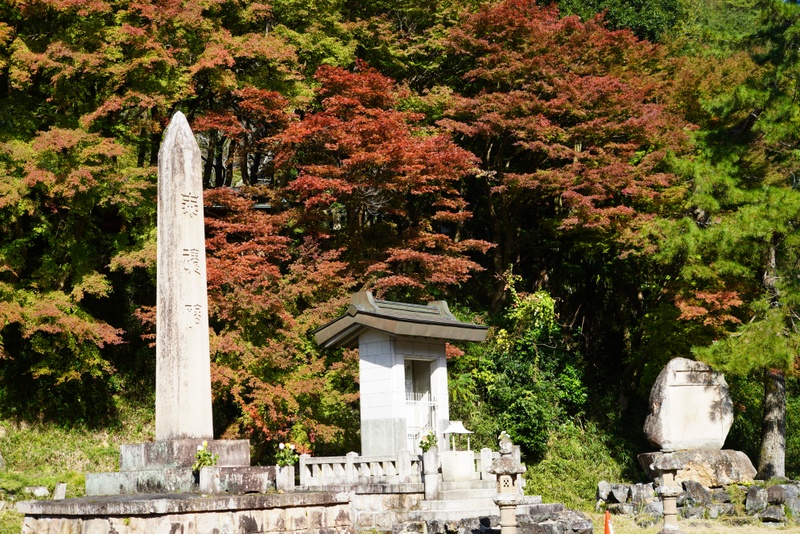
The castle is divided into four parts: Kita Senjo (north part), Minami Senjo (south part), Hanayashiki (west part) and Tenshudai (the centre and the highest spot of the castle at 353.7m). It became a protected historical monument in 1943. Restoration of the castle walls began in 1956 and was completed in 1980. It is now listed as one of “100 Fine Castles of Japan”
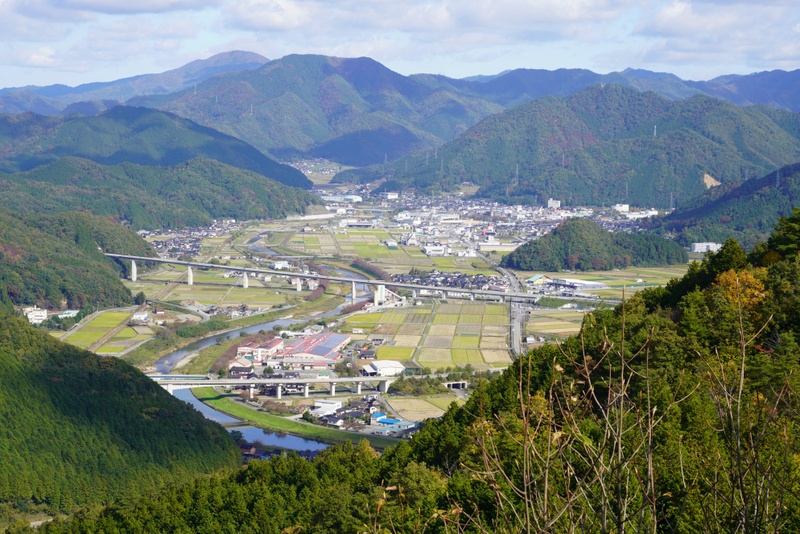
Below the castle is the historic Teramachi Street with Takeda Castle Lord’s family temple. The area used to be for Samurai residents.
There are three hiking trails to the castle. The entrance fee is ¥500. I took the shortest but steepest trail of about one kilometre (about 40 minutes). I had my walking poles.
The panoramic views of the lush green valleys and mountains in all directions from the top of the castle are most spectacular. I consider it one of the most beautiful and impressive sights I have seen in Japan. I spent an hour on the top enjoying the views and soaking in the atmosphere.

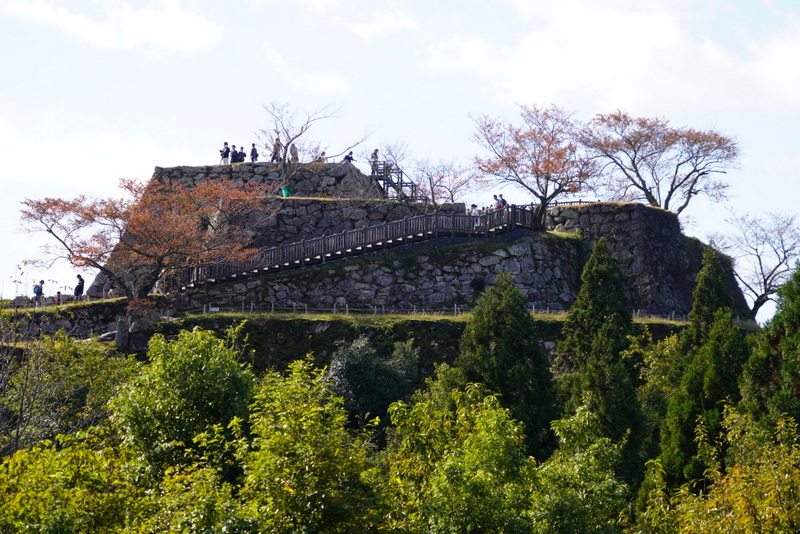
I returned to the town city centre via another route which landed me at the Hyomai Shrine. This route is equally demanding with many big steps which are not good for my knees.
I had an early beef lunch as I was hungry. The townscape is lovely and Japanese. I visited the old Kimura Sake Brewery and stopped at the visitor centre to watch a film on how the wall of the castle was built using two techniques called “Nozurazumi” and “Sangizumi”.
Finally, I walked along the atmospheric Teramachi Street which is lined with temples. I stopped at the Zenshoji Temple, Jokohji Temple, Shokenji Temple and Houjuji Temple. They are small, simple but peaceful.
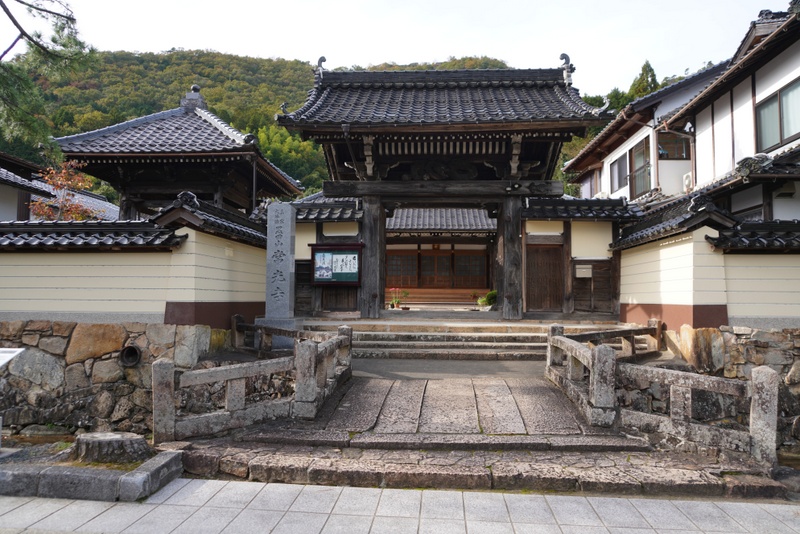
My train to Osaka only took two hours and I arrived in the busy train station after 5 pm. I booked a night at Umeda DDC Hotel Apartment through bookings.com. The website only mentioned the price of the room which was just under ¥4,000. Immediately after booking, I was charged almost ¥10,000 with ¥1,200 as commission (?) and over ¥5900 as cleaning fee. It’s malpractice and cheating: the cleaning fee and so-called ‘commission’ were not disclosed at the time of booking. I took the case up with both bookings.com and the property management to no avail. If one books with Airbnb, one would be given the breakdown at the outset. It is not the absolute amount that annoys me: it is the misinformation and non-disclosure of essential information that are unacceptable. What a terrible experience!
Since the bookings.com refused to cancel the booking and had already charged me, I spent a night in this self-contained apartment. The building is modern and well-managed but only about 25m from a railway track. As a result, the developer has installed three doors to keep the noise away.
As I had already been charged almost ¥6,000 for cleaning, I decided to make full use of the open kitchen. I bought fish in the market and had a grilled fish head for dinner. As the fish was fresh, the meat was most delicious. The next morning, I prepared a fish soup with vegetables before leaving the apartment. I gave bookings.com my feedbacks and complaint about non-disclosure of essential information on its website. Will it care and take remedial action? I doubt. Consumers, be aware!


